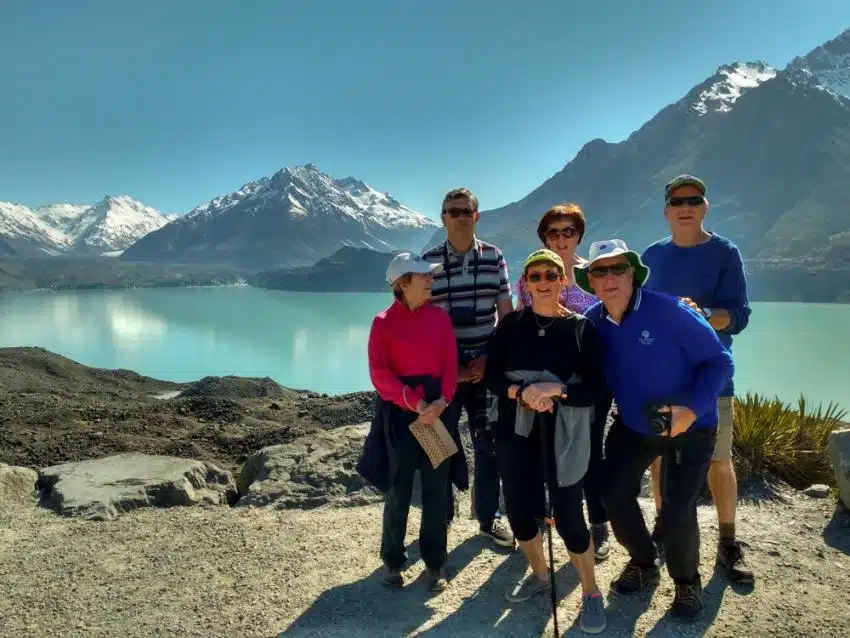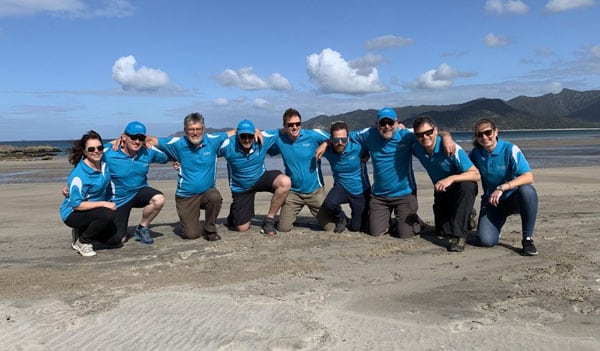Franz Josef Glacier is one of New Zealand’s great natural wonders – and it’s remarkably easy to reach. This huge sheet of ice creeps down the mountainside at a surprisingly low altitude, making it possible to explore the glacier easily on foot and marvel at this natural phenomenon up close.
Fascinating facts about Franz Josef Glacier
- In the Maori language, the glacier is called “Ka Roimata o Hine Hukatere.” This means “the tears of Hine Hukatere.”
- This 12km long glacier began forming approximately 7,000 years ago, about 2,400 years before the invention of writing and the beginning of recorded human history.
- Hine Hukatere was climbing a mountain with her love, Wawe, when he was swept away by an avalanche (hence the abundance of tears.)
- The glacier was named a German explorer named Julius von Haast, after the Austrian emperor in 1865.
What makes Franz Josef unique?
Franz Josef is the fastest moving and steepest glacier in all of New Zealand. It has been recorded as moving up to 4 metres in one day. (Compare this to most glaciers, which move at an average speed of around 50 cm to one metre per day, and Franz Josef seems pretty speedy!)
This means the landscape is constantly changing and no hike in this region is ever the same from one day to the next. Plus, where else in the world can you visit a rainforest, a beach and a glacier – all in the same day?
Location and how to get there
More than 250,000 visitors per year travel to Franz Josef to admire this enormous sheet of ice. Here are a few of the routes you can take to get here:
Nearest Airport: Hokitika, a 2 hour drive away. Flights available from anywhere in New Zealand.
Nearest Train Station: Greymouth (via the TranzAlpine), 2.5 hours drive away.
Christchurch to Franz Josef: 5+ hours without stopping to admire the views. (We recommend taking your time to enjoy the route and staying overnight in Punakaiki.)
Abel Tasman/Nelson to Franz Josef: We recommend breaking up this 300 mile route with a night or two in Paparoa National Park, giving you the chance to really enjoy the scenery.
Queenstown to Franz Josef: 5+ hours on hilly and windy roads – not our favourite route. We recommend traveling from Wanaka to Franz Josef instead as this route includes the ‘Heritage Highway’ and is much more relaxed and scenic. You can even stop for hikes at Fantail Falls, Blue Pools, Thunder Creek, the Gates of Haast and many other gorgeous spots.
What to pack
- A t-shirt and a light fleece to wear overtop (layers are key because the temperatures can fluctuate quickly).
- A wooly jumper (that’s ‘Kiwi Speak’ for a warm sweater.)
- A waterproof windbreaker layer.
- Cotton pants or track pants (jeans are not recommended as they become heavy and cold if they get wet.)
- Sturdy hiking shoes or boots (if you plan to hike on the glacier itself, your tour guide will supply the appropriate equipment).
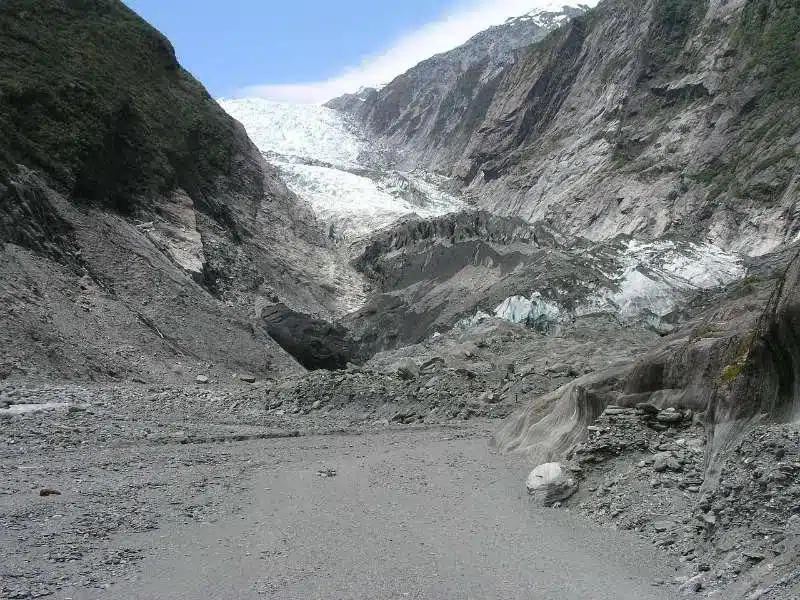
Weather and best time of year to visit
When it comes to the weather at Franz Josef Glacier – you never really know what you’re going to get. You’re only a few miles from the ocean, so wet weather can come storming in unexpectedly.
The abundance of rain here is due to a phenomenon called Orographic Lift – the winds collect moisture as they travel over the Tasman Sea, then the moisture is released as rain or snow when the air hits the high peaks of the Southern Alps. So, be sure to have waterproof clothing with you and some indoor activities such as the wildlife centre and the cinema on your itinerary, just in case.
One of the best times of the year to visit Franz Josef is in the New Zealand winter (aka summer in the Northern Hemisphere), because it is the driest time of the year but it will also be the least crowded. The glacier will also look different than in the warm weather, as the sun won’t be melting it as quickly.
To check the weather before your arrival, take a look at the local online forecast.
Safe travel tips when visiting Franz Josef Glacier
- Listen to the safety advice of your tour guide – they know the area and its risks.
- Check the weather forecast before your hike and don’t go out if a serious storm is predicted.
- Don’t hike alone. Find a partner, or join in with a guided tour.
- Wear sturdy hiking shoes that will give you the support you need on rocky mountain trails.
- Watch out for loose gravel on the paths that might cause you to slip and tread carefully.
- Beware cracks in the glacier, which are known as crevasses. They can be incredibly deep and very dangerous.
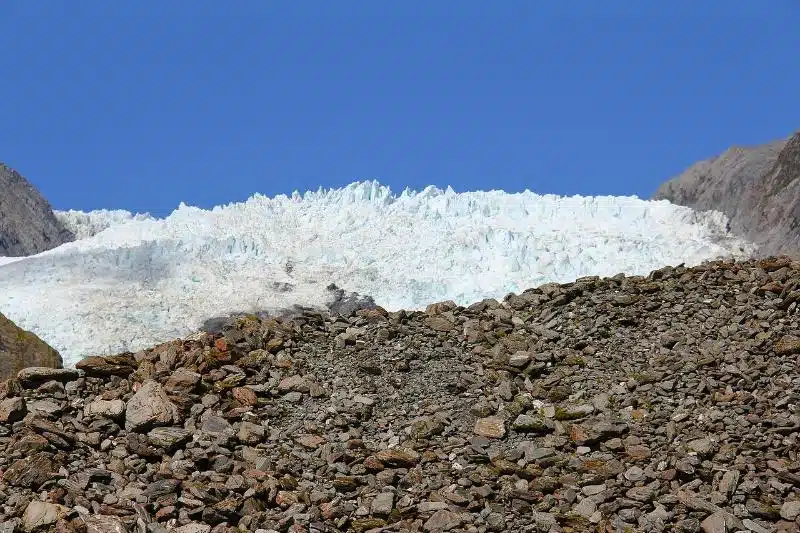
Franz Josef vs. Fox Glacier
There aren’t too many differences between these two glaciers – but Franz Josef has more shops and restaurants than Fox Glacier, a few more things to do and it also has hot pools.
It’s also closer to Lake Matheson and it’s steeper – so you’ll have a better chance of spotting “Blue Ice”. Here’s a scientific explanation of why it happens.
Accommodation options near Franz Josef Glacier
There are many different options for accommodation near Franz Josef, whether you plan to go camping on a budget or you want to treat yourselves to a stay in a luxury hotel.
For example, on our guided tours of New Zealand we stay at Punga Grove Motel and Suites. It’s surrounded by rainforest and offers great outdoor areas and decks where you can soak up the view.
If you are looking for a budget hostel in Franz Josef, there are a few great options such as Glow Worm and the YHA Franz Josef. They offer affordable shared dormitories, kitchen facilities, and a great vibe.
If you really want to pamper yourself, consider a stay at Te Waonui Forest Retreat. It’s an exclusive luxury hotel featuring a gourmet restaurant and spa.
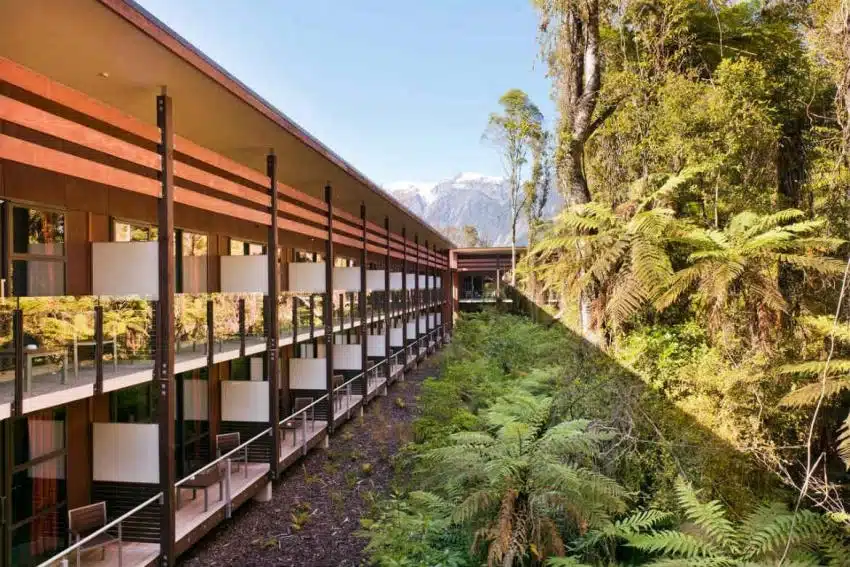
Our favourite things to do in and around Franz Josef Glacier
In addition to admiring the beautiful glacier, there’s so much more to do here. Here are some of the many great activities you can enjoy at Franz Josef Glacier. If you would like to book these activities as optional extras on our tours, just let us know!
Scenic helicopter rides
Take a scenic helicopter flight over the Southern Alps to see a bird’s eye view of the glacier. There are several great local helicopter operators who offer scenic rides over this stunning landscape.
Most of the tours will last around 15-45 minutes and the longer tours include both Franz Josef and the nearby Fox Glacier, as well as an opportunity to land on the snowfield and take some photos.
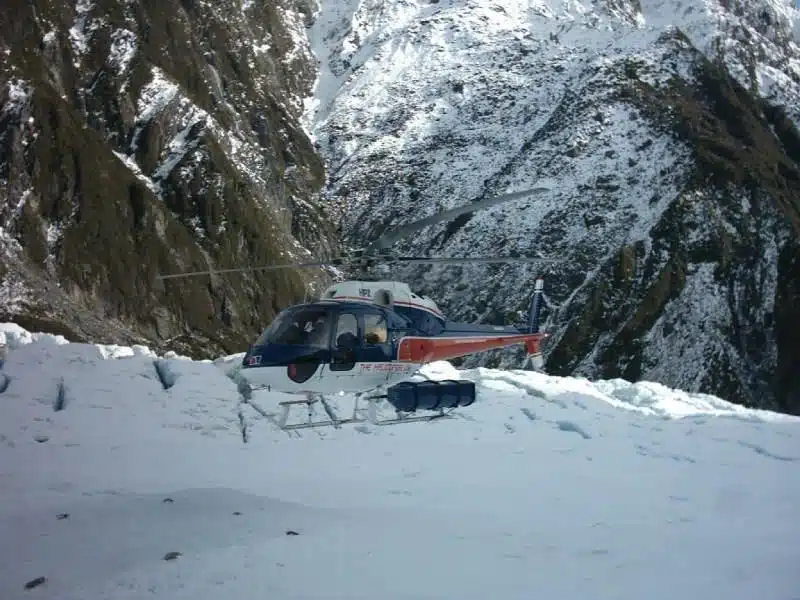
Kayaking in Okarito Lagoon Glacier Lake
Go wildlife spotting while kayaking through Okarito Lagoon glacier lake. This is the largest unmodified wetland in New Zealand and when you venture into the wilderness you’ll find dozens of bird species within a unique landscape of tidal mudflats, dense rainforest and 400 year old Kahikatea trees.
This area is rich with diverse creatures and kayaking is a great way to see them, as you’ll be able to glide through the bush quietly without disturbing the birds and animals.
Photo credit: Jesse Palmer
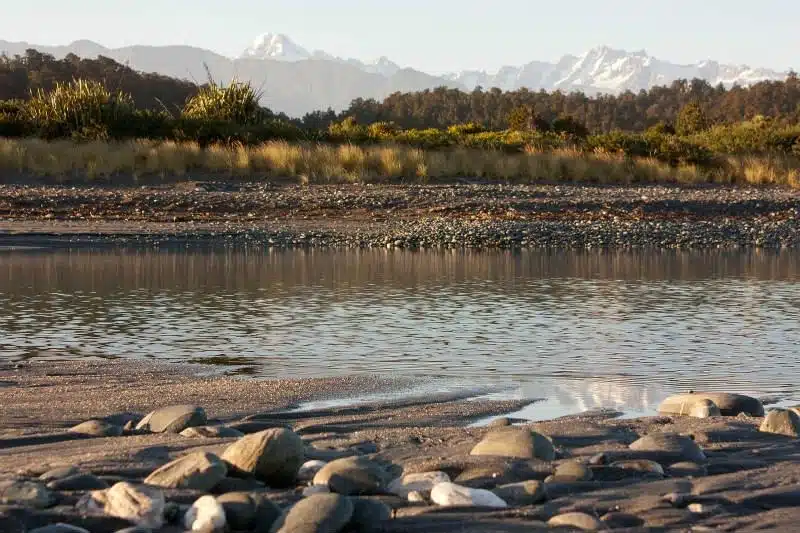
Hiking to the Okarito Trig
Hike up to the Okarito Trig and admire the spectacular views up and down the coast. It was from this point that the early explorers first viewed the coastline and the Southern Alps.
This gorgeous trail takes around 90 minutes return and it will lead you to the viewing platform that was once a vital hub for the very first survey network in the area. The trail begins at the southern end of the village and once you walk down from the Trig you can continue along the Three Mile Pack Track to the Three Mile Lagoon.
Exploring glacier region walks
There are many walks in this region that will let you explore deeper into this ruggedly beautiful landscape. There are easy access short walks that can be enjoyed in
Try the Sentinel Rock Walk, the Alex Knob and the Roberts Point track – all great glacier hikes that will take you off the beaten track. Before you head off on your walk, be sure to read this important information on glacier walks from the New Zealand Department of Parks and Recreation.
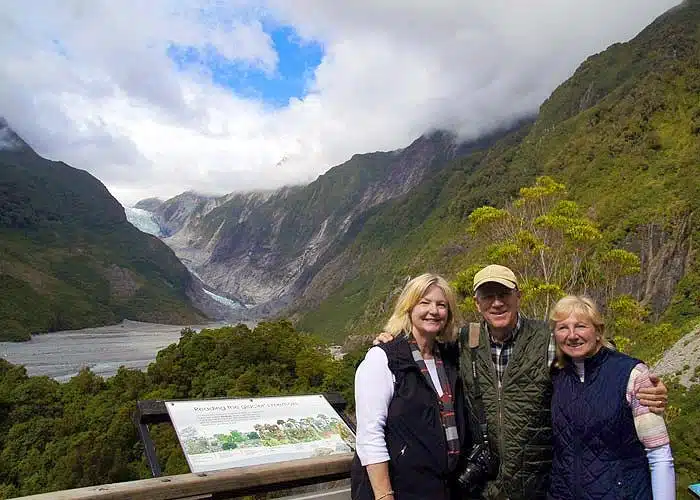
Visiting Hokitika
Visit the colonial town of Hokitika, the setting for “The Luminaries.” Settled in 1860 after the discovery of gold on the west coast, this quirky little historic town is a wonderful place to learn about the history of the West Coast, as it has many stories about gold miners, shipwrecks and more.
Take a stroll along the town’s historic walk and enjoy the lovely old buildings – as well as the unique art galleries and boutiques offering handmade artwork and pounamu (greenstone) jewellery. (The nearby Arahura River is a traditional source of this gemstone.)
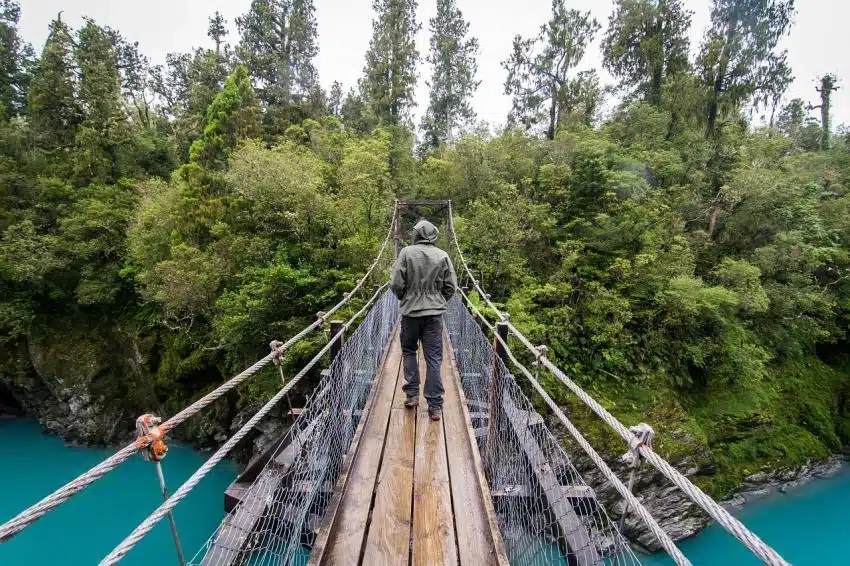
Soaking in the Glacier Hot Pools – bliss!
Soak in the geothermal baths at Glacier Hot Pools to soothe your muscles after a long day of hiking. There’s nothing quite like the blissful, relaxing feeling of letting yourself completely unwind.
The three main pools weave their way through the rainforest, so you’ll be soaking while surrounded by nature. Or, you can also book a private pool for a totally secluded place to relax. Plus, there are also spa and massage treatments available.

Guided tours vs. non-guided travel
Should you take a guided tour to Franz Josef, or go on your own? Consider the advantages of each:
Advantages of guided travel
- Your tour guide knows the local area and will be able to give you fascinating insights.
- Some of the parts of the glacier can ONLY be visited with a qualified guide.
- When you are on a group tour, you’ll get a chance to meet interesting people from all over the world.
- Accommodation, transport and meals will all be covered for you.
- Your tour guide will take care of booking all of the optional activities.
Advantages of Non-Guided Travel
- You will be able to design your schedule and travel at your own pace.
- You’ll be able to choose only the activities you really want to do.
- You can travel only with people you know, which means there is no risk of personality clashes.
One of the great things about our group tours is we keep our groups small. This means you’ll have more of a personal, intimate experience rather than being shuttled around with a huge crowd.
Franz Josef glacier is featured on many of our multi-day tours, including the Kakapo 21 Day Tour, the Kaka 17 Day Tour and the Kea 9 Day Tour.
If you have any more questions when planning your trip to Franz Josef, contact us. We are happy to help.


